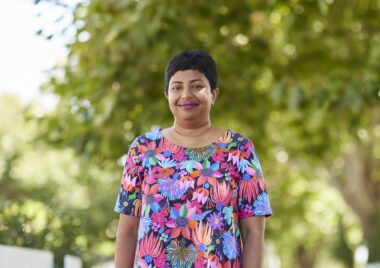The common roundworm has helped Monash University researchers unlock new information about fertility and genes.
Professor Roger Pocock of Monash University's Biomedicine Discovery Institute has led a team which has found new and very specific genes, in the worms, which help grow 'germ' cells, or germination cells. These, depending on specific genes, become either sperm cells or egg cells.
Around 80 per cent of the roundworm genes identified – for 'germline' development – are found in humans.
"Little is known about how they control fertility," said Professor Pocock. "This is a first step to understand more about how fertility is controlled and provides a foundational atlas for us and other researchers to investigate how genes influence fertility."
He said to understand infertility and then optimise assisted reproduction, as well as find contraceptive targets, all require knowledge of how germ cells develop. Human infertility affects up to 186 million people worldwide, including 15 per cent of Australian reproductive age couples.
"This is the discovery of key fertility regulators. This important information will help define how fertility is controlled and provide new opportunities for manipulating fertility for therapeutic purposes."
The roundworm – Caenorhabditis elegans – is the perfect model for the scientists because it is hermaphrodite, so it produces both sperm and egg cells. They can be examined in living animals because they are transparent, they are genetically remarkably similar to humans, and reproduce and grow very quickly.
"I've never used anything else, and I never will," said Professor Pocock, the Head of the Brain Development, Neuroplasticity and Stem Cells Laboratory at Monash. "It's my organism and it has been for 25 years."
Roundworms are literally everywhere in nature, in soil and compost and rotting vegetation. Some are parasites but the Caenorhabditis elegans variety is not and they have adapted to most climates on earth.
Professor Pocock said, "When you want to make a cell, whether it's a neuron or an egg or a sperm or a muscle cell, genes have to be turned on and off to generate that cell. We call them 'gene regulatory networks' - they define a cell. There are molecules in there that bind DNA to turn the genes on and off. But nobody had previously performed a systematic screen to ask, okay, which of these factors are found or are generated in the germline, and which ones of them have a function in the germline?"
The team then used RNA sequencing to examine the germline, moved molecules, and looked at whether sperm cells or egg cells (oocytes) were made. A new paper in Nature Communications shows they found more than 150 with "subtle" defects in the germline, and eight which are essential for fertility, most of which hasn't been found before.
"Suddenly all of these gene names have been released, so now others like us will also investigate some of these genes themselves,” Professor Pocock said. “It provides the community with a really great resource of finely dissected analysis of gene function and fertility for them to be able to perform some experiments too."
***ENDS***
For media enquiries please contact: Monash University
Helena Powell – Media Communications Officer
E: [email protected]
T: 0474 444 171
For more Monash media stories, visit our news and events site
For general media enquiries please contact:
Monash Media
E: [email protected]
T: +61 (0) 3 9903 4840


